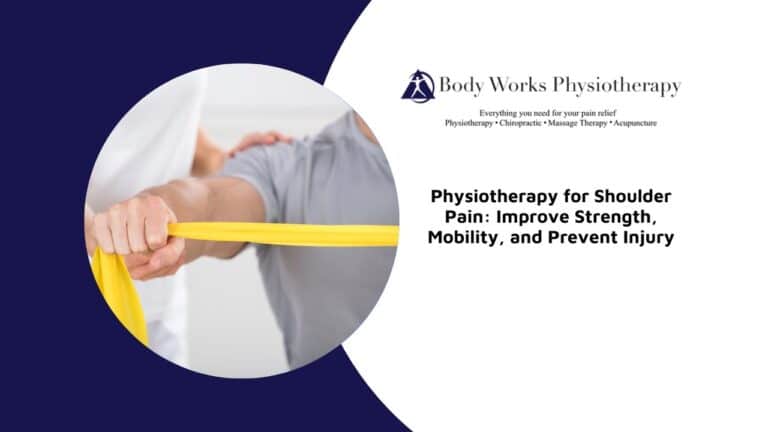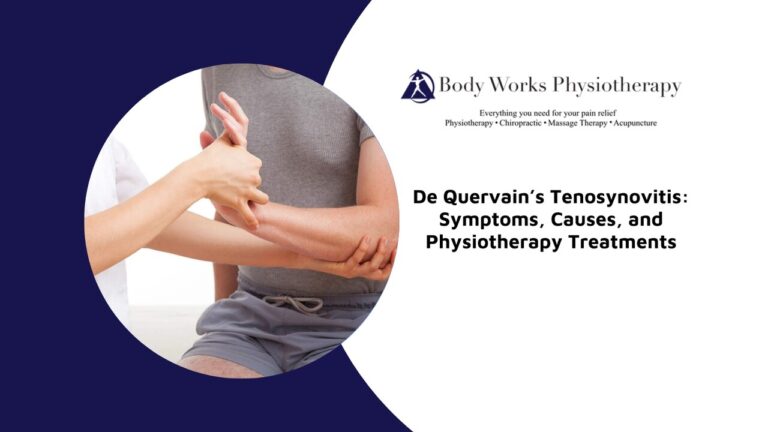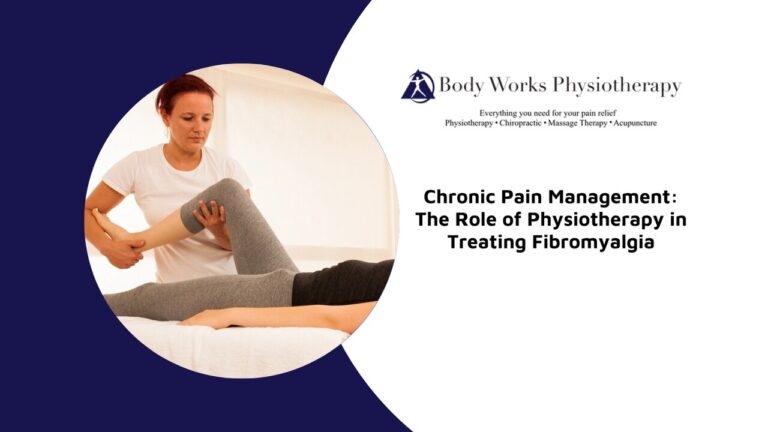
Dealing with the persistent pain and discomfort of tennis elbow can be frustrating, especially when it affects your ability to perform daily activities or enjoy hobbies. Fortunately, physiotherapy has proven to be a highly effective treatment approach, targeting both immediate pain relief and long-term recovery. In this blog, we’ll explore how physiotherapy helps alleviate tennis elbow symptoms, promote healing, and prevent recurrence.
Treating Tennis Elbow: The Role of Physiotherapy
Physiotherapy plays a crucial role in treating tennis elbow by addressing the root cause of the pain, which is typically inflammation and damage to the tendons in the elbow. A physiotherapist uses targeted therapies to
- Reduce Inflammation: Physiotherapy helps alleviate inflammation around the elbow. The treatment methods used help increase circulation to the area, promoting natural healing and reducing the tenderness that often accompanies tennis elbow. Anti-inflammatory exercises and gentle stretches may also be introduced to help manage pain levels without aggravating the injury.
- Improve Mobility: Restricted mobility is common in tennis elbow due to pain and stiffness. A physiotherapist may use joint mobilizations, soft tissue massage, and targeted stretches to gradually restore flexibility and range of motion in the elbow, wrist, and forearm. Improving mobility is key to reducing pain during daily activities and ensuring you can perform functional movements comfortably.
- Restore Strength to the Affected Area: To support tendon healing, physiotherapy includes a variety of strengthening exercises that focus on the forearm, wrist, and elbow muscles. Restoring strength in these muscles provides stability, reducing strain on the tendon and promoting a faster recovery.
- Prevention of Recurrence: Physiotherapy helps prevent the recurrence of tennis elbow by addressing the underlying causes of the condition, such as muscle imbalances or poor posture. By improving flexibility, strengthening muscles, and correcting faulty movement patterns, physiotherapy minimizes the risk of re-injury.
Techniques Used by Physiotherapists to Treat Tennis Elbow
Physiotherapists use a variety of specific techniques to treat tennis elbow, such as:
- Manual Therapy: This includes soft tissue massage and joint mobilizations to improve circulation and reduce stiffness. The therapist will use gentle massage techniques to release tension in the forearm muscles and apply joint mobilization techniques to increase flexibility around the elbow joint. These movements improve blood flow and reduce pain, helping to speed up the healing process.
- Eccentric Strengthening Exercises: These exercises help rebuild strength in the forearm muscles without aggravating the tendons. By focusing on the controlled, lengthening phase of muscle contraction, eccentric exercises target the tendons and strengthen the wrist extensors. The therapist will guide you through these exercises with a focus on gradual progression to build resilience in the affected muscles and tendons.
- Shockwave Therapy: A non-invasive treatment that delivers shockwaves to the affected area, stimulating the healing process. Shockwave therapy increases blood flow and breaks up scar tissue, encouraging the natural repair of the tendons. It’s typically used for chronic cases where other treatments have had limited success, helping to reduce pain and inflammation over a series of sessions.
- Taping or Bracing: Your physiotherapist may recommend taping or using a brace to offload stress from the tendon, allowing it to heal while still allowing some level of movement. Taping techniques or braces are applied around the forearm to relieve strain on the tendon during activities, providing support and reducing pain. Taping also helps you maintain better posture and form, further supporting recovery.
These techniques, combined with tailored exercises, promote healing and restore function.
How Long Does It Take to Recover From Tennis Elbow With Physiotherapy?
Recovery time for tennis elbow varies depending on the severity of the condition and how diligently you follow the physiotherapy plan. On average, you can expect noticeable improvement within 6 to 12 weeks of consistent physiotherapy. Some people may see faster results, while chronic cases may require more extended treatment.
As for the frequency of sessions, it typically depends on the severity of your condition and your progress. Generally, clients start with 1-2 sessions per week, which may be adjusted as symptoms improve. Between sessions, your physiotherapist will provide you with a home exercise program to reinforce the therapy. Regular attendance, combined with home exercises, ensures that the treatment is effective and promotes a quicker recovery.
Physiotherapy Exercises for Tennis Elbow
Some of the most effective physiotherapy exercises for tennis elbow focus on strengthening the forearm muscles and improving flexibility. Common exercises include:
- Eccentric Wrist Extensions: Strengthens the wrist extensors, which are often involved in tennis elbow. Sit with your forearm resting on a table or your thigh, palm facing down, holding a light weight (1-2 lbs to start) in the affected hand. Slowly lower the weight by extending your wrist, allowing the forearm muscles to stretch. Use your other hand to assist the weight back to the starting position. Focus on controlled movement, aiming for 10-15 repetitions to build strength without overstressing the muscles.
- Towel Twist: A gentle twisting motion to stretch and strengthen the forearm muscles. Begin by holding a rolled-up towel with both hands, keeping your elbows slightly bent. Twist the towel in opposite directions as if wringing it out, then hold the twist for about 5 seconds before releasing. Reverse the direction and repeat. Aim for 10 twists in each direction, making sure to keep tension balanced in your forearm to avoid discomfort.
- Isometric Wrist Extension: Holding your wrist in a neutral position while applying resistance to build strength. Start by sitting with your forearm on a flat surface, palm down. Using your other hand, gently press down on the back of the affected wrist while resisting the movement to keep your wrist in place. Hold this position for 5-10 seconds and repeat 8-10 times, gradually increasing hold time as your strength improves.
- Resisted Supination and Pronation: These exercises focus on the rotation of the forearm, improving overall stability. Begin by holding a light dumbbell or a resistance band with your forearm supported on a flat surface, elbow bent at 90 degrees. Slowly rotate your forearm so your palm faces upward (supination), then reverse to bring the palm downward (pronation). Complete 10 repetitions, gradually increasing resistance to boost forearm stability without overloading the muscles.
- Finger Stretching Exercises: Using an elastic band to stretch and strengthen the fingers and forearm muscles. Place an elastic band around all your fingers, and slowly spread them apart to create resistance. Hold for a few seconds, then relax and repeat 10-12 times. This exercise engages both the fingers and forearm muscles, helping to improve grip strength and stability essential for reducing stress on the elbow.
A physiotherapist will guide you through these exercises with proper form to avoid aggravating the injury.
Physiotherapy Sessions for Tennis Elbow: What to Expect
During your first physiotherapy session for tennis elbow, the physiotherapist will conduct a thorough assessment to understand the extent of your injury. This includes reviewing your medical history, asking about your symptoms, and performing a physical exam to evaluate your range of motion, muscle strength, and areas of tenderness.
Based on this assessment, the therapist will create a personalized treatment plan, which may include manual therapy, stretches, strengthening exercises, and possibly modalities like ultrasound or electrical stimulation to reduce pain and promote healing.
Regain Optimal Elbow Mobility
At Body Works Physiotherapy in Scarborough, we understand how tennis elbow can impact your quality of life, and we’re here to help you get back to pain-free living. Our experienced physiotherapists work with you to create a customized treatment plan that addresses your specific needs, guiding you through exercises and therapies that promote healing and prevent future injuries.
Ready to take the first step toward relief? Contact us today to schedule your appointment and start your journey to recovery!






